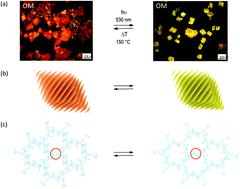当前位置:
X-MOL 学术
›
Chem. Soc. Rev.
›
论文详情
Our official English website, www.x-mol.net, welcomes your
feedback! (Note: you will need to create a separate account there.)
How to use X-ray diffraction to elucidate 2D polymerization propagation in single crystals.
Chemical Society Reviews ( IF 40.4 ) Pub Date : 2020-06-29 , DOI: 10.1039/d0cs00176g A Dieter Schlüter 1 , Thomas Weber , Gregor Hofer
Chemical Society Reviews ( IF 40.4 ) Pub Date : 2020-06-29 , DOI: 10.1039/d0cs00176g A Dieter Schlüter 1 , Thomas Weber , Gregor Hofer
Affiliation

|
Covalent long-range ordered (crystalline) sheets called 2D polymers have recently been synthesized by irradiating single crystals of suitably packed monomers. To have such an action proceed successfully, billions of bond formation processes have to be mastered exclusively in two dimensions within 3D crystals. This raises questions as to how to elucidate the mechanism of these unusual polymerizations as well as their entire strain management. The article will show that single crystal X-ray diffraction based on both Bragg and diffuse scattering are powerful techniques to achieve such goal. The very heart of both techniques will be explained and it will be shown what can be safely concluded with their help and what not. Consequently, the reader will understand why some crystals break during polymerization, while others stay intact. This understanding will then be molded into a few guidelines that should help pave the way for future developments of 2D polymers by those interested in joining the effort with this fascinating and emerging class of 2D materials.
中文翻译:

如何使用X射线衍射阐明单晶中的2D聚合传播。
最近,通过辐照适当堆积的单体的单晶,合成了称为2D聚合物的共价远程有序(晶体)片。为了使这样的动作成功进行,必须在3D晶体内的二维中专门掌握数十亿个键的形成过程。这就提出了关于如何阐明这些异常聚合反应的机理及其整个应变管理的问题。该文章将显示基于布拉格和漫散射的单晶X射线衍射是实现此目标的强大技术。将说明这两种技术的核心,并说明可以在它们的帮助下安全地得出哪些结论,以及哪些没有。因此,读者将理解为什么某些晶体在聚合过程中破裂,而另一些晶体保持完整。
更新日期:2020-08-04
中文翻译:

如何使用X射线衍射阐明单晶中的2D聚合传播。
最近,通过辐照适当堆积的单体的单晶,合成了称为2D聚合物的共价远程有序(晶体)片。为了使这样的动作成功进行,必须在3D晶体内的二维中专门掌握数十亿个键的形成过程。这就提出了关于如何阐明这些异常聚合反应的机理及其整个应变管理的问题。该文章将显示基于布拉格和漫散射的单晶X射线衍射是实现此目标的强大技术。将说明这两种技术的核心,并说明可以在它们的帮助下安全地得出哪些结论,以及哪些没有。因此,读者将理解为什么某些晶体在聚合过程中破裂,而另一些晶体保持完整。











































 京公网安备 11010802027423号
京公网安备 11010802027423号